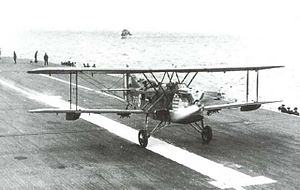
The Amiot 143 was a 1930s French 5-seat Multiplace de Combat (M.5) designed to meet 1928 specifications for a monoplane capable of day and night bombing, long-range reconnaissance and bomber escort.

The Bloch MB.170 and its derivatives were French reconnaissance bombers designed and built shortly before the Second World War. They were the best aircraft of this type available to the Armée de l'Air at the outbreak of the war, with speed, altitude and manoeuvrability that allowed them to evade interception by the German fighters. Although the aircraft could have been in service by 1937, debate over what role to give the aircraft delayed deliveries until 1940.
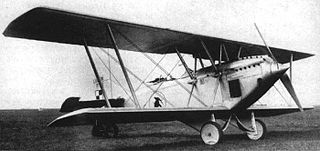
The Lublin R-VIII was a Polish bomber, reconnaissance aircraft and seaplane designed in the late 1920s by the Plage i Laśkiewicz factory in Lublin. It was the first in-house design of Plage i Laśkiewicz, and the first with the name Lublin.

The Farman F.220 and its derivatives were thick-sectioned, high-winged, four engined French monoplanes from Farman Aviation Works. Based on the push-pull configuration proven by the F.211, design started in August 1925 and the first flight of the prototype was on 26 May 1932. The largest bomber to serve in France between the two world wars was the final F.222 variant. One variation was intended to be an airliner.

The Mitsubishi 2MR was a Japanese carrier-based reconnaissance aircraft of the 1920s, also known as the Navy Type 10 Carrier Reconnaissance Aircraft or the C1M in the Navy's short designation scheme. Designed for Mitsubishi by the British aircraft designer Herbert Smith, the 2MR was used by the Imperial Japanese Navy through the 1920s and 1930s.
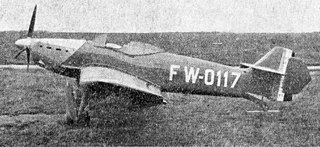
The Loire-Nieuport LN.40 aircraft were a family of French naval dive-bombers for the Aeronavale in the late 1930s, which saw service during World War II.

The Fokker C.VIII was a reconnaissance aircraft built in the Netherlands in the late 1920s. Intended primarily for the photographic reconnaissance role, it was a larger machine than other Fokker reconnaissance types of the period, with space for a third crew member, who acted as camera operator. It was also Fokker's first aircraft of this type to be built as a monoplane, a parasol wing configuration. The construction, however, was in the familiar Fokker style with wooden wings covered with plywood and fabric, and a steel-tube fuselage, also fabric-covered.
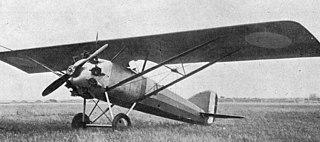
The Gourdou-Leseurre GL.30 was a racing aircraft built in France in 1920 which formed the basis for a highly successful family of fighter aircraft based on the same design.

The Lioré et Olivier LéO H-13 was a French biplane two-engine flying boat of the 1920s, built in passenger and military variants.
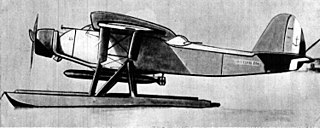
The Latécoère 290 was a torpedo bomber floatplane produced in France during the 1930s. Designed by Latécoère in response to an Aéronavale specification for such an aircraft, the 290 was based on its successful Laté 28.3 mail plane. It was a conventional high-wing, strut-braced monoplane that carried a single torpedo externally under the fuselage.
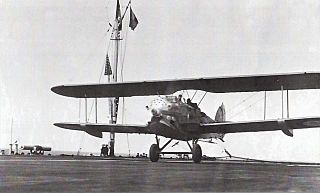
The Levasseur PL.4, aka Levasseur Marin, was a carrier-based reconnaissance aircraft produced in France in the 1920s.

The Levasseur PL.5 was a carrier-based fighter produced in France in the late 1920s, in response to the 1924 AMBC.2 specification issued by the Service Technique de l'Aéronautique (STAé). It was a conventional, single-bay sesquiplane that carried a crew of two in tandem, open cockpits. Like other Levasseur naval designs of the day, it incorporated several safety features in case of ditching at sea. Apart from small floats attached directly to the undersides of the lower wing, the main units of the fixed, tail-skid undercarriage could be jettisoned in flight, and the underside of the fuselage was given a boat-like shape and made watertight.

The Levasseur PL.7 was a torpedo bomber developed in France in the late 1920s. It was a development of Levasseur's PL.4 reconnaissance aircraft and intended to replace their PL.2 then in service with the Aéronavale. It was a single-bay biplane of largely conventional design, but incorporating safety features for naval operation, including jetissonable main undercarriage units, a watertight, boat-shaped fuselage, and small floats on the undersides of the lower wings.
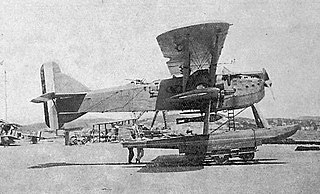
The Levasseur PL.14 was a torpedo bomber seaplane developed in France in the late 1920s. It was essentially similar to Levasseur's PL.7 carrier-based reconnaissance aircraft with the addition of pontoons. The design dispensed with the small underwing floats that formed part of the safety equipment of Levasseur's carrier-based aircraft of the period, but retained the boat-like fuselage. The wing was built to the 18.00-metre design originally developed for the PL.7 but ultimately rejected in favour of a shorter wing.
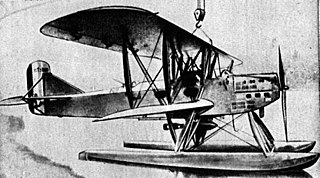
The Levasseur PL.15 was a torpedo bomber seaplane developed in France in the early 1930s. It was a follow-on design to Levasseur's PL.14 that had, in turn, been developed from the carrier-based PL.7. While the PL.14 retained the PL.7's boat-like fuselage, the PL.15 was a purpose-built seaplane with an all-new, slender fuselage.
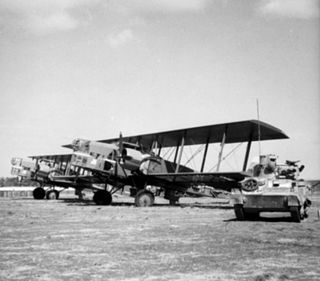
The Lioré et Olivier LeO 25 was a bomber aircraft produced in France in the late 1920s.

The Nieuport-Delage NiD 42 was a fighter aircraft built in France in the early 1920s, the first in a family of designs that would form the backbone of the French fighter force over the next decade.
The Sopwith B.1 was an experimental British bomber aircraft of the First World War. A single-seat, single-engined biplane, the B.1 was built by the Sopwith Aviation Company for the Royal Navy. Although only two were built, one was used for bombing raids over France.
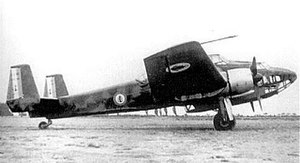
The SNCAO CAO.600 was a French prototype twin-engined torpedo-bomber of the Second World War. It was intended to operate from two new aircraft carriers of the French Navy, but only a single example had been completed and flown when the surrender of France in June 1940 ended development of the aircraft.

The Nieuport-Delage NiD 43 was a single-engine, two-seat biplane fighter aircraft designed and built for shipboard use in France in 1924.
